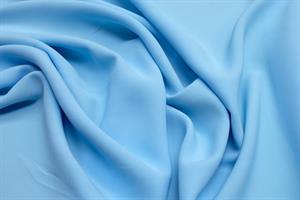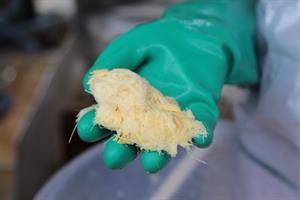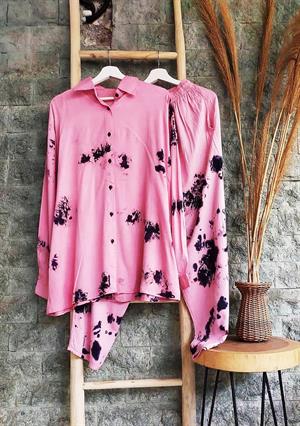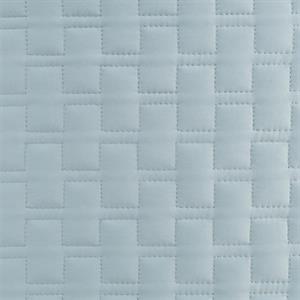PDF chapter test TRY NOW
We know that silk's fascinating structure induced the human mind to create it artificially. By the end of the 19th century, scientists successfully created an artificial fibre, having properties similar to that of silk, known as Rayon or Artificial silk.
Rayon is made from wood or bamboo pulp (cellulose), a natural source. Some chemicals such as sodium hydroxide and carbon disulfide are added to it. Rayon is semi-synthetic fibre as we use both natural and artificial sources to produce it.

Rayon fabric
Semi-synthetic fibre:
Rayon, artificial silk was first produced in the 19th century by scientists. In 1946, the first rayon factory in India was established in Kerala.
Rayon has a similar chemical structure to that of cotton, but the chain length is shorter. The polymerisation in rayon takes place at 400\ °C to 700\ °C.

Wood pulp
Leftover fibres on cotton seeds after the ginning process makes some types of rayon. Rayon is cheaper compared to silk and can be woven like natural silk fibre.

Rayon clothes
Properties of Rayon:
Rayon is a very soft, versatile fibre. They are comfortable and are very good absorbent. Rayon has the same properties as that of natural fibre.
They can replicate the feel and texture of natural fibres such as silk, cotton, wool etc. The dying process is easy, and they have low elastic recovery.

Rayon bedcover
Uses of Rayon:
Rayon can mix with cotton to make bed sheets or wool to produce carpets and home furnishing products. Rayon is also found in sanitary products, diapers, bandages and gauze for dressing wounds.
The advantage of rayon is that they are highly absorbent, durable, inexpensive etc.
The disadvantage is that they are weak when wet, wrinkle, stretches and shrinks on washing.
